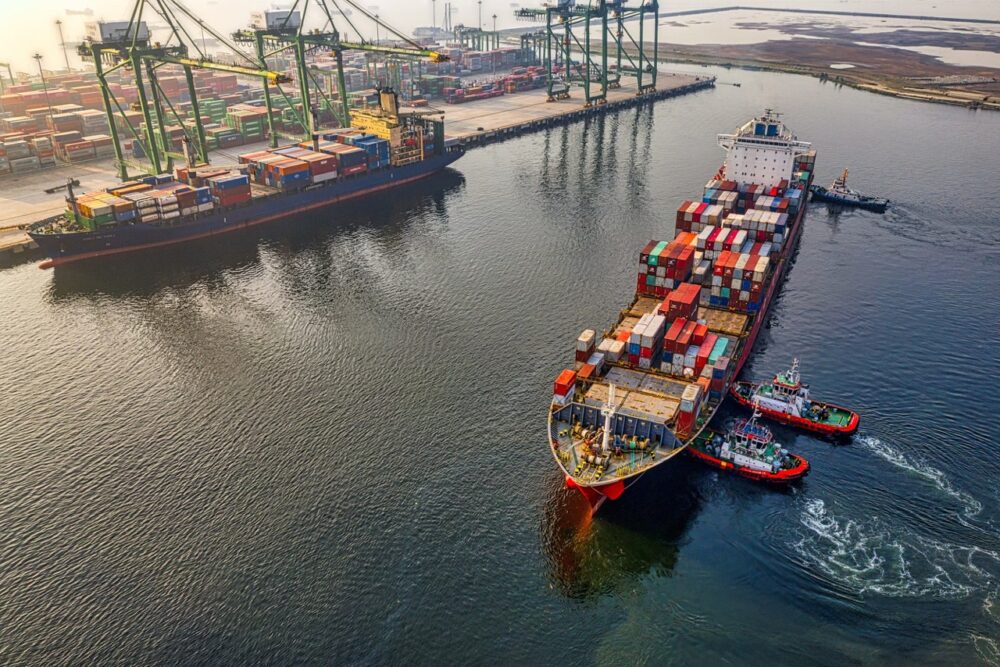The e-commerce sector has started seizing an increasingly larger share of the European market sales income. Despite the multiple challenges witnessed along the way, such as supply chain disruptions, pandemic aftereffects, and staff shortages, several aiding factors have raised the obstacles and put the industry on an ascending path regarding e-sales. More interestingly, the number of enterprises marketing their services and products to other businesses instead of end consumers is rising, aided by the growing variety of B2C companies diving into the B2B environment.
B2B orders remain a subset of business acquisitions in meeting their services and goods supply goals. Contrasted to other international regions and due to stagflation and inflation, Europe makes for a slight B2B online commerce market. In the hunt for the competitive edge, European businesses have a handful of straightforward solutions to resort to, such as reviewing their supply partners, reconsidering their acquisition processes, shifting to sustainable operations and collaborators, turning to ecologically friendly fulfilment partners, and the list can go on. Initiatives like these are in full bloom, and with the seismic shift undergone by European B2B businesses, the latest predictions suggest that the turnover could hit an astronomical 1.7 trillion euros by 2025.
But what can this jump in the figure mean for SMEs, and how may this progress sustain itself? What obstacles do businesses need to overcome to contribute to the appraised revenue, and how can the right fulfilment partner, such as gomonta.com, smooth their path to sustained development?

Where does the B2B e-commerce sector stand now?
The European B2B e-commerce landscape is often surpassed by B2C activity owing to the latter category’s efficiency in marketing strategies, humanized customer approach, smoother delivery and return processes, and so on. Research demonstrates that goods and services targeting customers instead of companies are contributing more to the overall turnover in Europe, all the more since social media has become the most influential business asset and source of competitive edge apprehension.
🏆
Discover the Creative Retail Awards
The Creative Retail Awards are much more than a mere accolade; they represent the pinnacle of achievement in the retail industry. Garnering a nomination or winning one of these awards is a testament to innovation, excellence, and leadership.
www.creativeretailawards.com
Yet, in a world henpecked by digital innovation, B2B settings are at the cusp of a game-changing leap. While many B2B organizations struggle with traditional obstacles like fraud-related fears, sluggish tech advances, insufficient internal knowledge or skill, and several others, things are changing for the better. A late study from the Buy Now, Pay Later provider Billie shows that only 5 in 10 B2B purchasers resort to e-commerce platforms. Even if the figures are humble and the progress is timid compared to the B2C counterparts, strides are being made on more fronts than the social media space.
Fulfilment partners emerge as the reliable one-size-fits-all solution
The exponential rise in B2B activity and income doesn’t happen overnight but is a process where the pillars of success are often put to the test. Factors like buyers’ shortening wait time tolerance, increased product demand, higher return process expectations, and so on push businesses to perfect their A-to-Z processes for an impeccable flow of goods. Compared with B2B settings, B2C organizations have a completely different approach to operations, such as logistics, supply chain, distribution, and so on. They often need to expand their infrastructure to cater to rising needs and seize priceless opportunities for growth.
Now, B2B organizations need trustworthy partners that can handle most, if not all goods and service transitions. Fulfillment organizations emerge as a big hit for European B2B sellers looking to make the most of a market slowly inching toward the 1.7 trillion-euro turnover. And expert service representatives attest to this. Agents from Monta suggest a rising demand for B2B fulfilment services that meet more stringent demands than ever, prompting the future-oriented fulfilment partner to invest in first-rate technology and its utilization learning, expand their relationships abroad, adopt sustainable operations and tools, and so on. B2B organizations seeking sustainable progress are encouraged to keep checking off boxes like the following:
- Their fulfilment partner should work with a good deal of international businesses, both B2C and B2B
- The operations should reduce environmental harm through processes like the usage of renewable resources
- The fulfilment service should handle everything, from logistics to product storage to shipping and, when necessary, to returns.
What else should the world realize about today’s B2B settings?
You may often come across common expressions evidencing that only B2Cs sell to people, while the latter boils down to companies, but this misconception is finally being dispelled. The main thing you, as a B2B organization runner, should never forget is that regardless of the products you’re selling and their purpose, there’s an individual that’s ultimately betwixt and between instead of a lifeless company.
B2B is more about getting under the skin of the end-user and ensuring the supplied goods or services cater to some ubiquitous and ever-rising needs, which suffice for more extensive user bases. Plus, companies targeting companies are more aware of the existing partners helping them get the top dollar and who can get involved in the process, such as market research teams, logistics providers, distribution partners, internal and external professionals that know the industry, products, business models, and so on.
The surge in B2B demand for lightning-fast order processing, rapid packing, flawless product delivery, impeccable customer service, and seamless returns while prioritizing environmental protection presents a double-edged sword. Firstly, businesses need help to match this pace and avoid being overshadowed. Secondly, savvy enterprises aware they’re witnessing a transformative breakthrough will capitalize on this opportunity to forge strategic partnerships and gain a competitive edge.
Business websites: the deal maker or breaker
Reports strengthen the theory that no business can survive in today’s digitalized landscape without an avant-garde website model that prioritizes the UX, whether it’s a consumer or business. Regarding purchases and sales within Europe, the enterprise’s web page is endlessly the top avenue that connects consumers with the seller, calling for appropriate approaches that meet the demands of B2B settings.
B2B organization websites speak to a broader group of people simultaneously, so the details and information offered must be strategically and efficiently grouped and delivered. The e-commerce sector is taking larger bites from the overall European sales turnover, calling for similarly prosperous solutions to tackle arising challenges, so what’s the approach you’re willing to adopt?

















